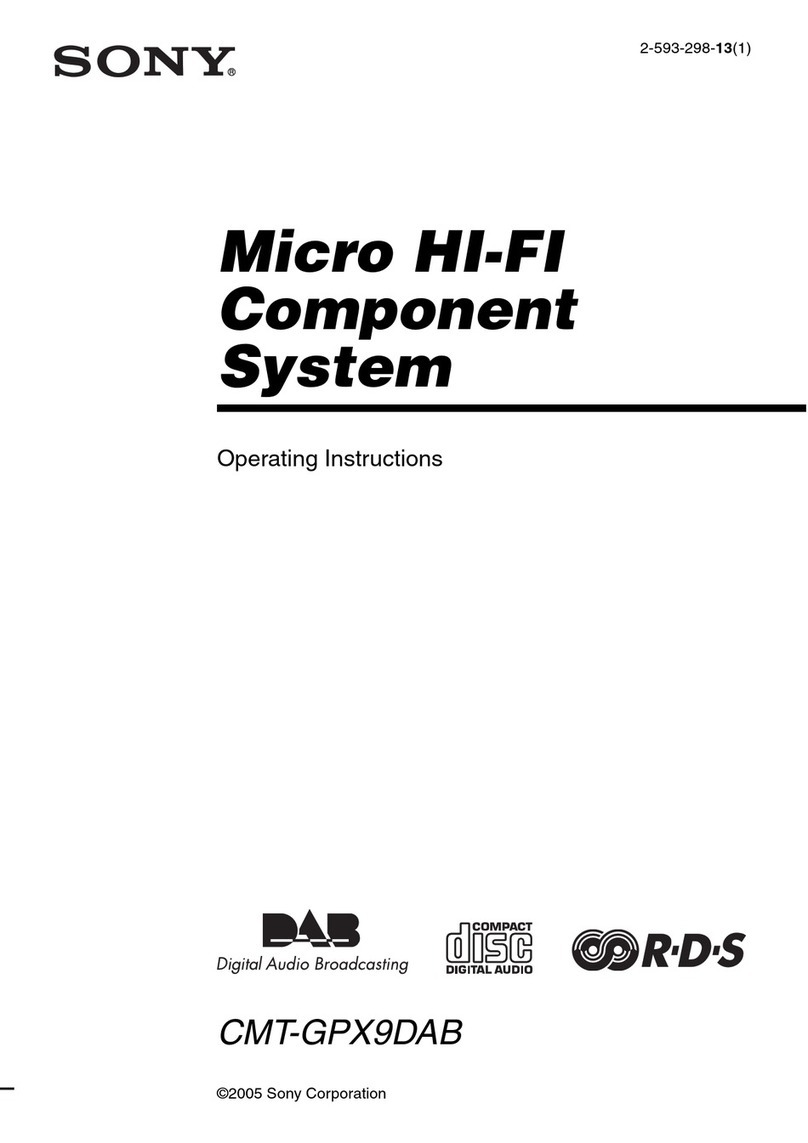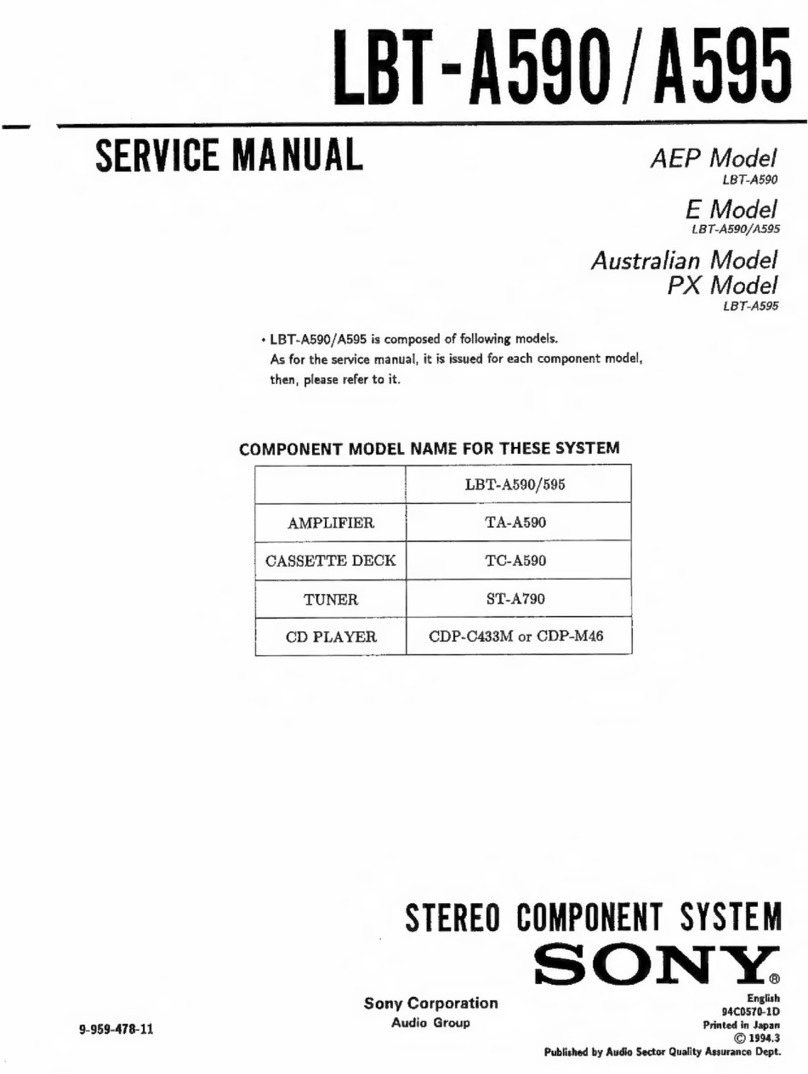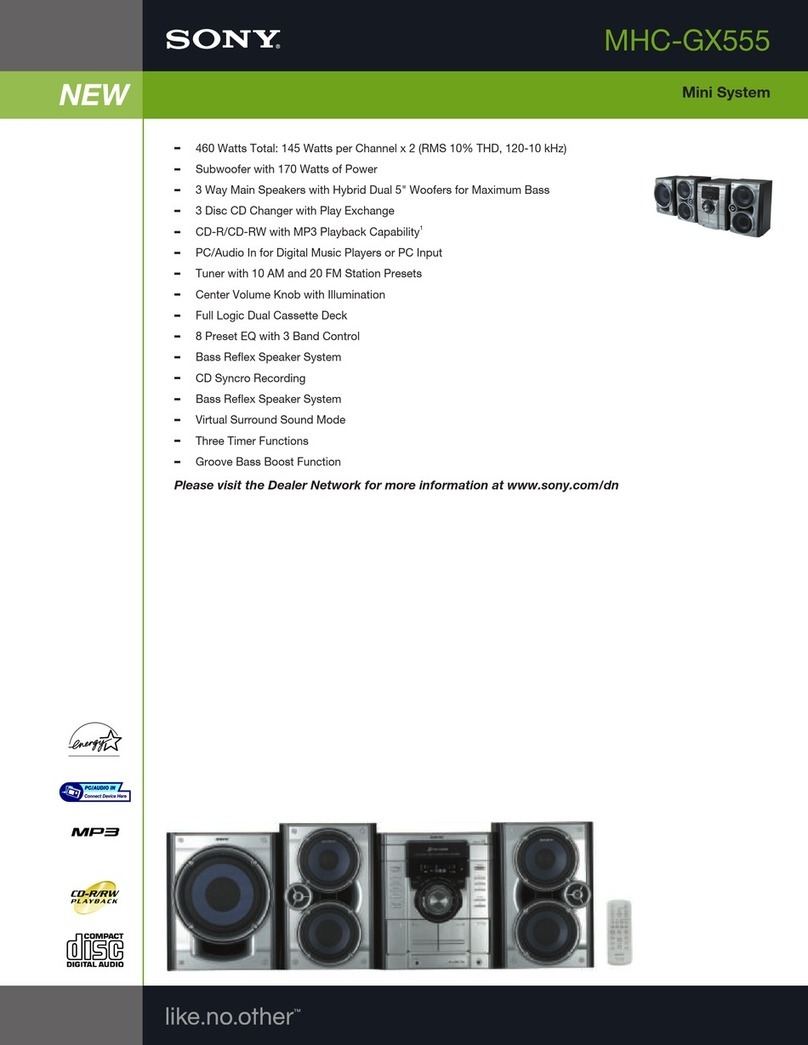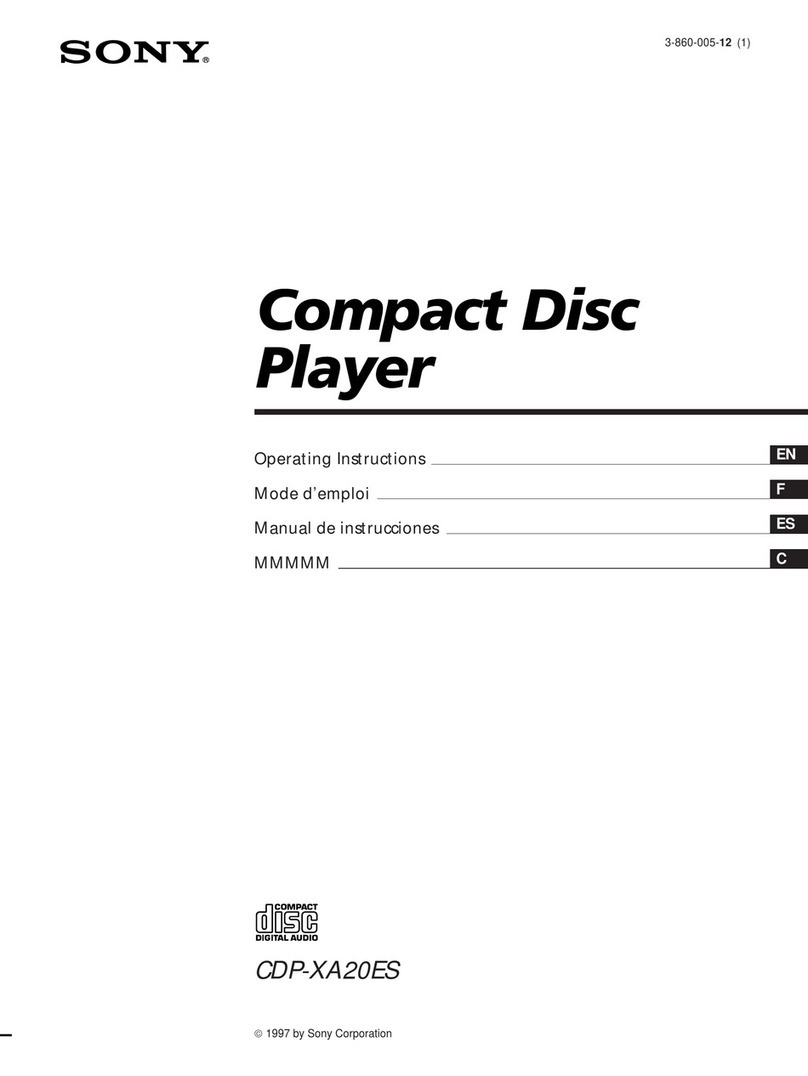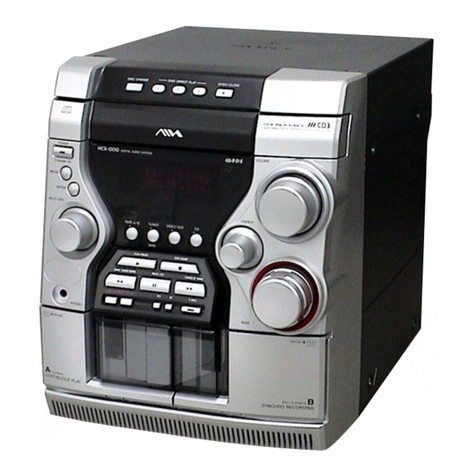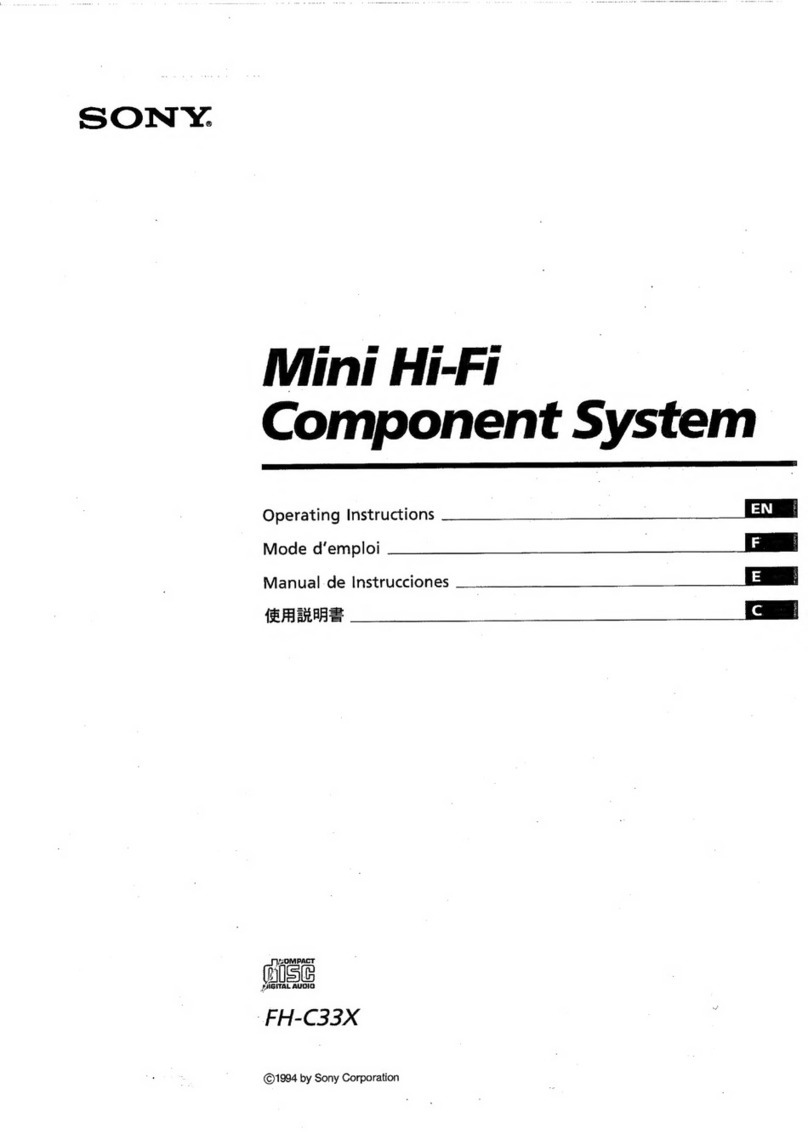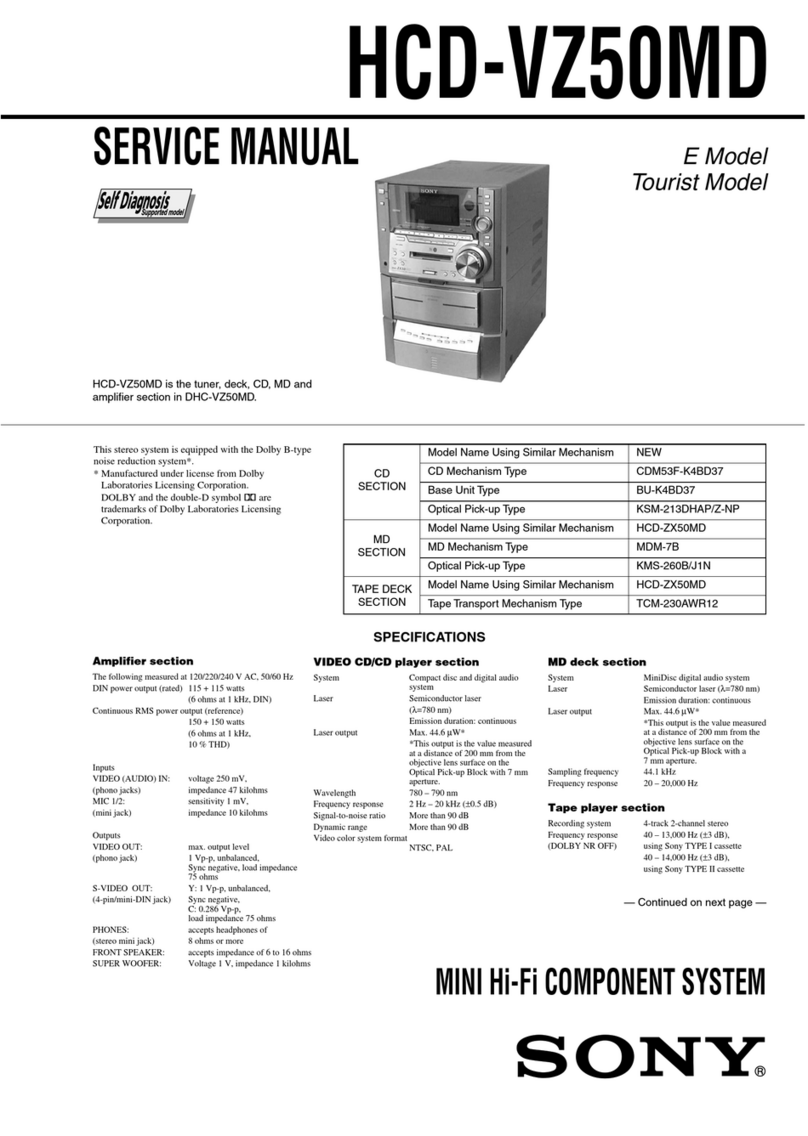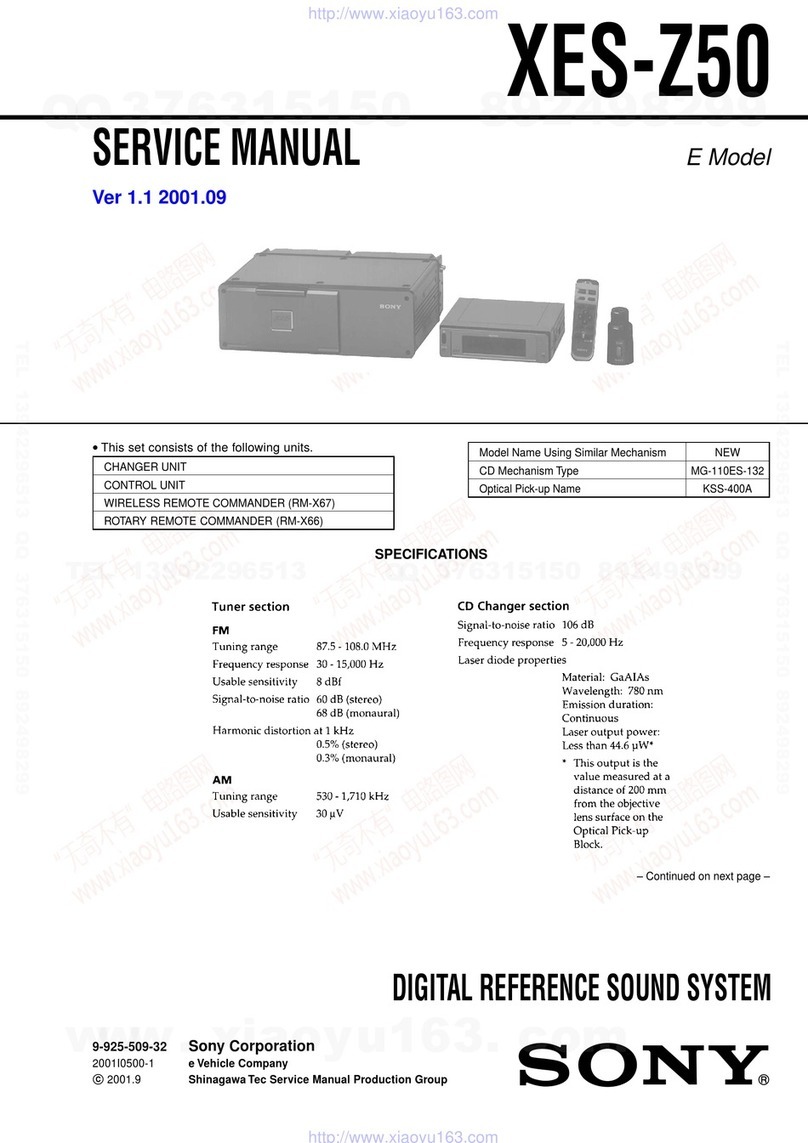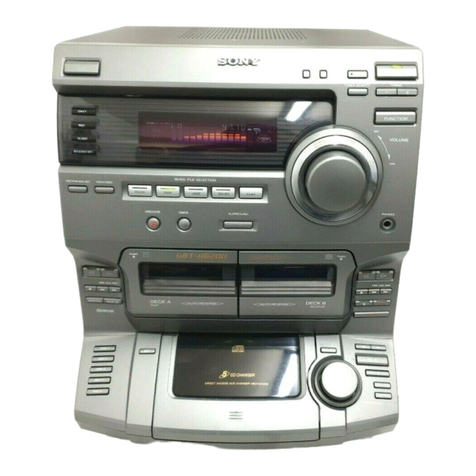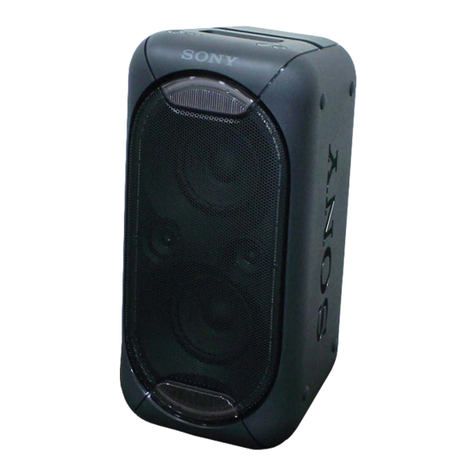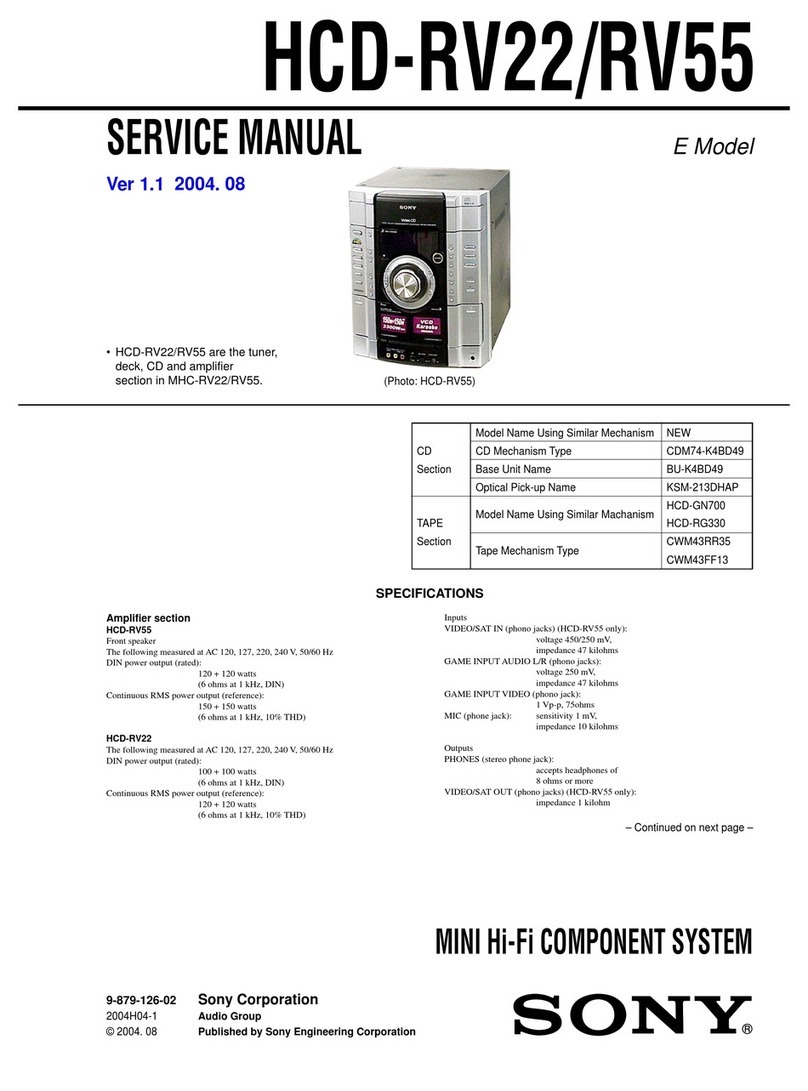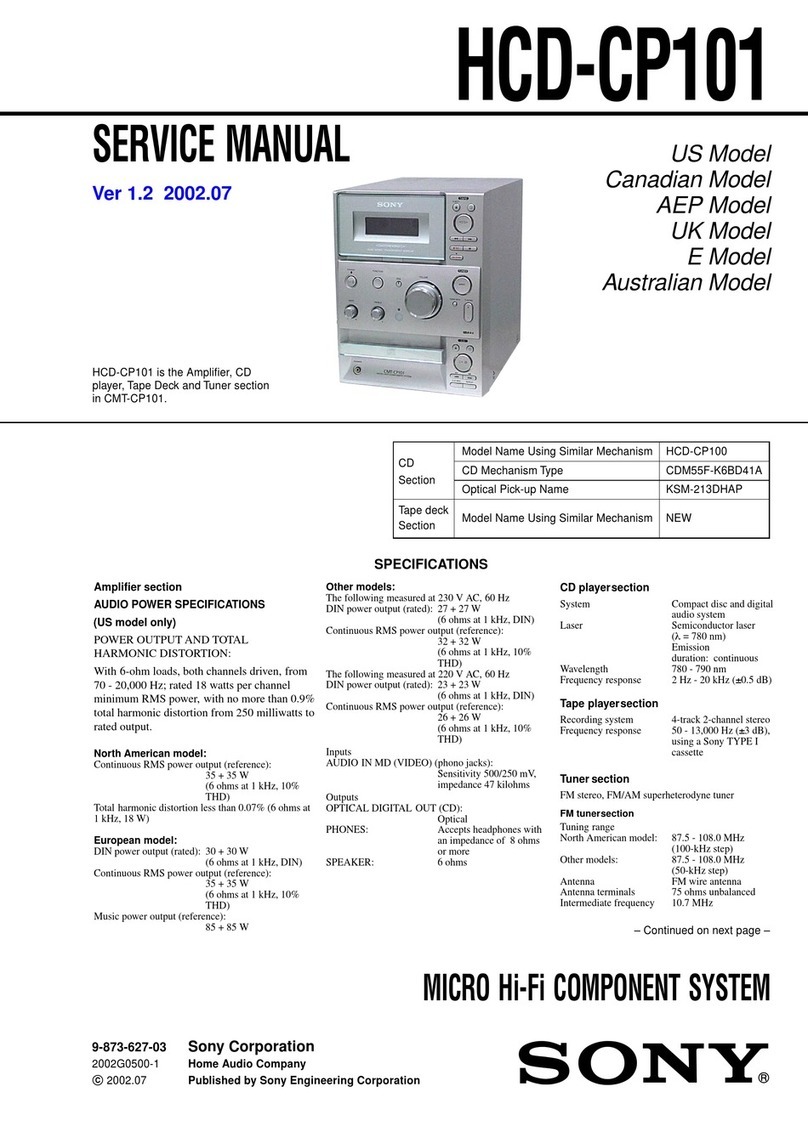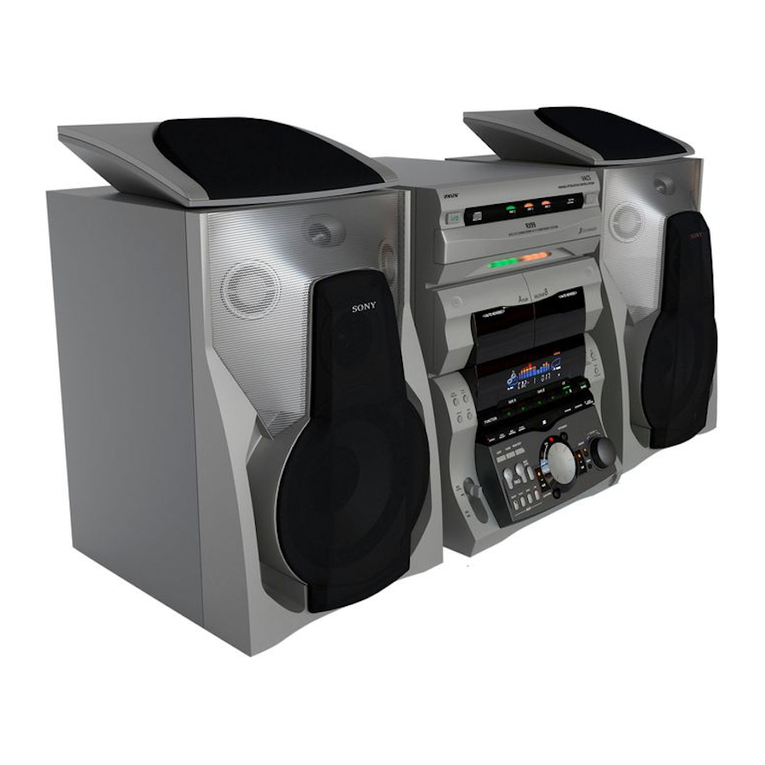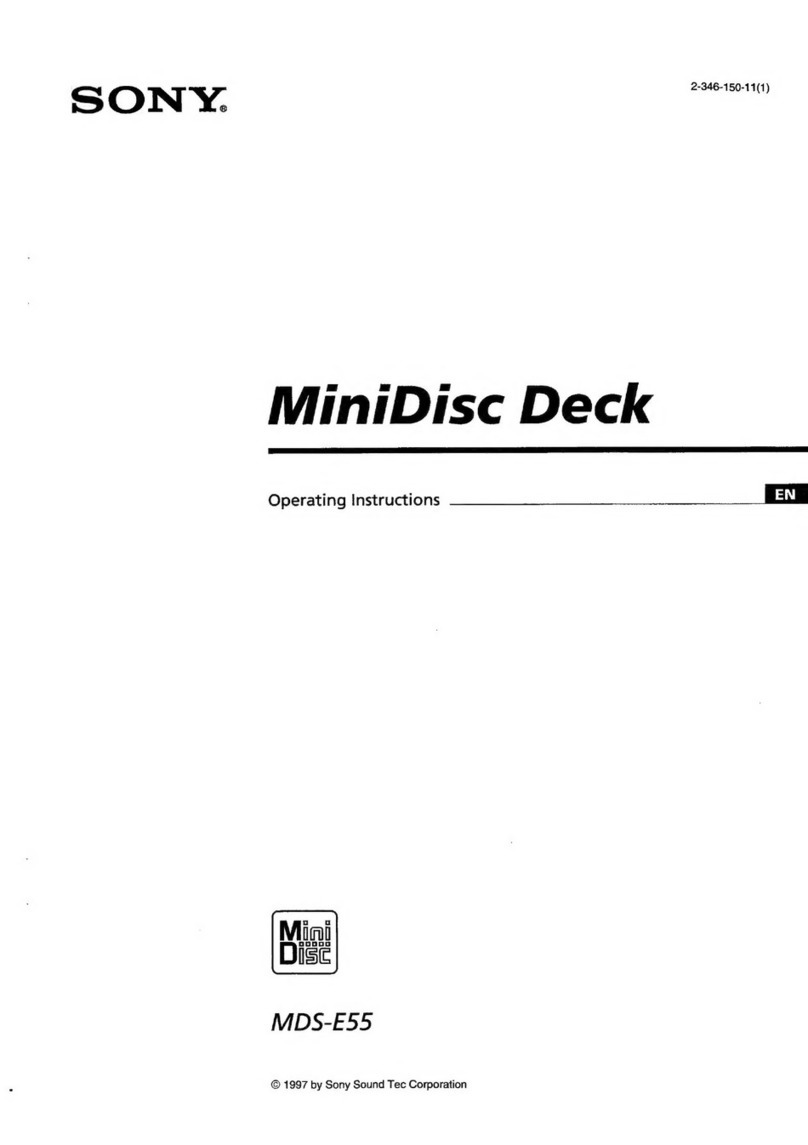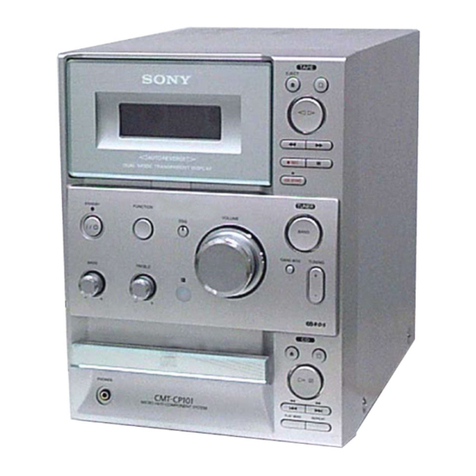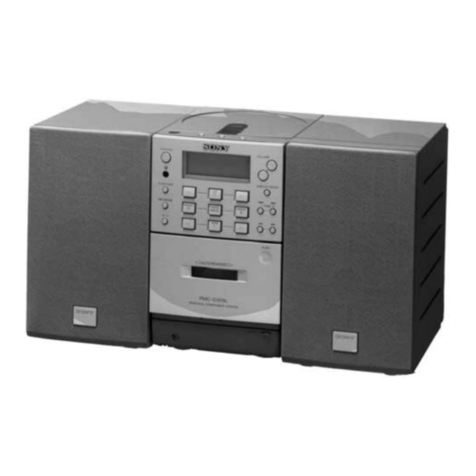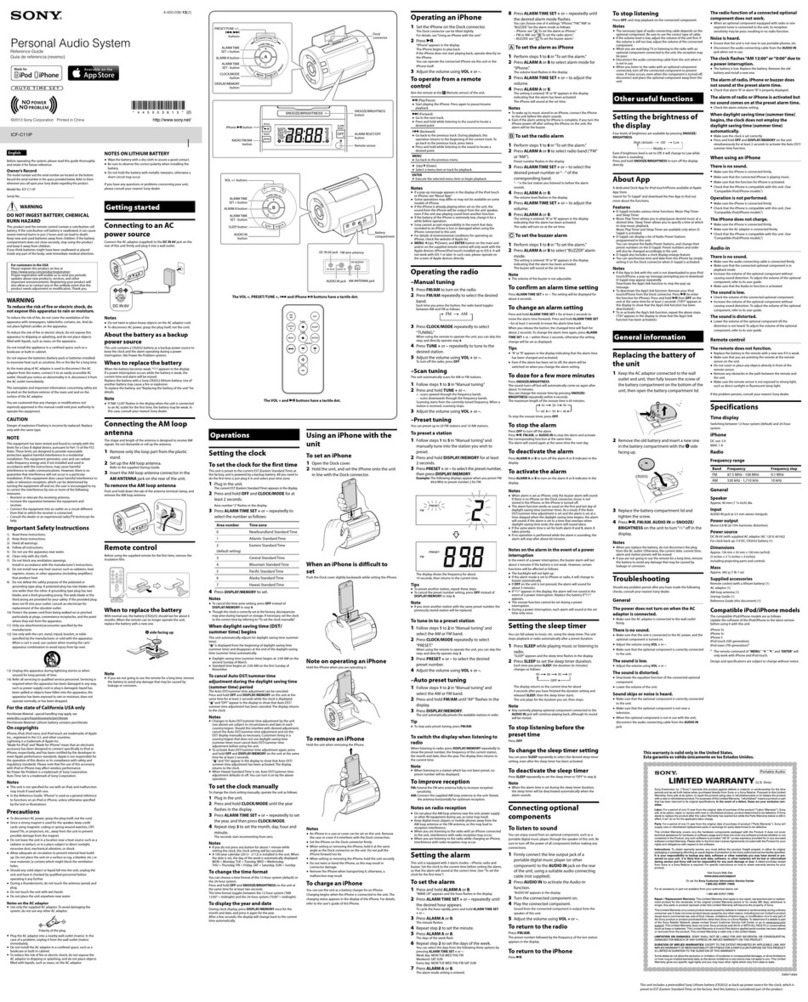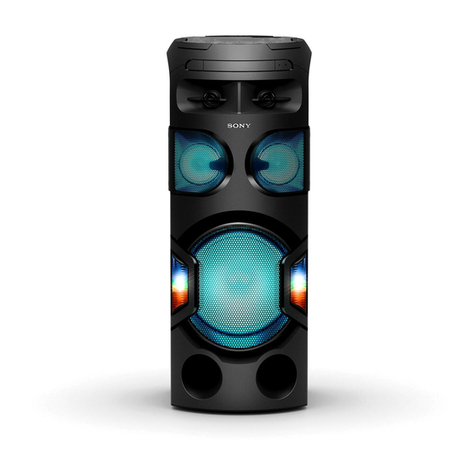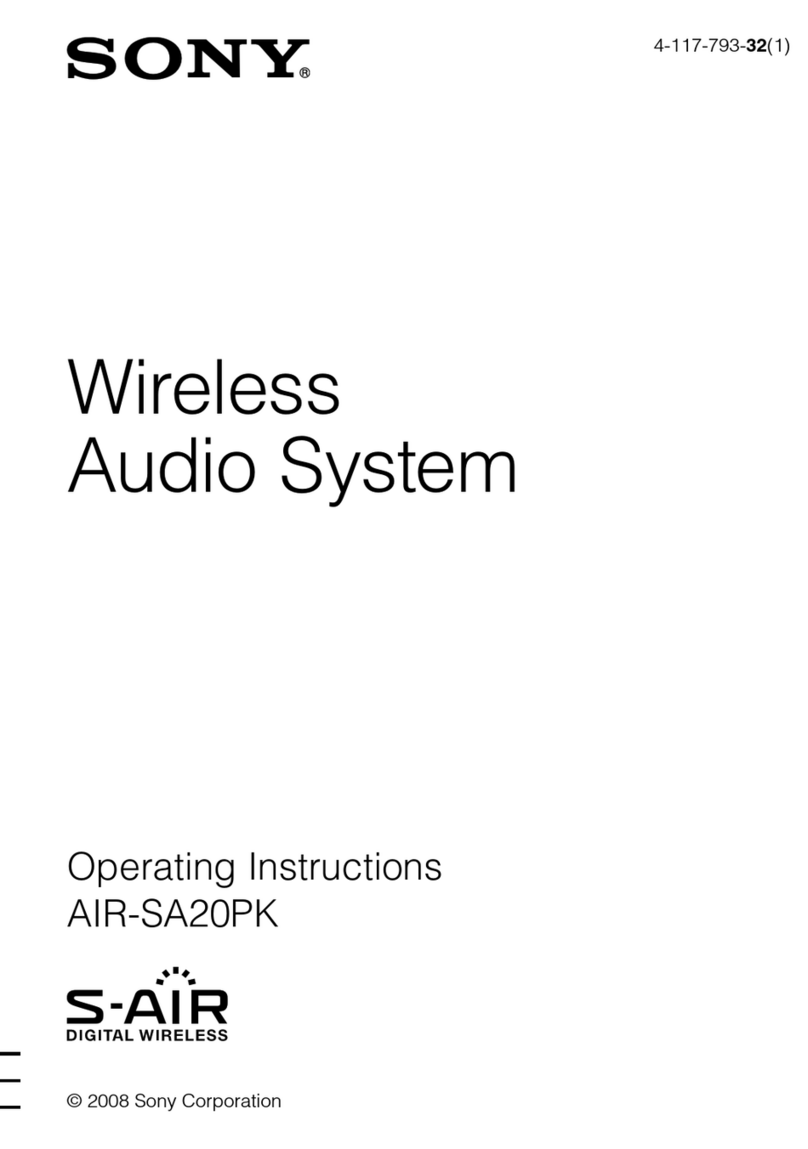
2
HCD-MG110/MG310AV
TABLE OF CONTENTS
Tape player section
Recording system 4-track 2-channel stereo
Frequency response 40 – 13,000 Hz (±3 dB),
using Sony TYPE I
cassette
Tuner section
FM stereo, FM/AM superheterodyne tuner
FM tuner section
Tuning range 87.5 – 108.0 MHz
Antenna FM lead antenna
Antenna terminals
North American model: 75 ohms unbalanced
Australian model: 75 ohms balanced
Intermediate frequency 10.7 MHz
AM tuner section
Tuning range
North American model: 530 – 1,710 kHz
(with the interval set at
10 kHz)
531 – 1,710 kHz
(with the interval set at
9 kHz)
Australian model: 531 – 1,602 kHz
(with the interval set at
9 kHz)
Antenna AM loop antenna
Antenna terminals External antenna terminal
Intermediate frequency 450 kHz
General
Power requirements
North American model: 120 V AC, 60 Hz
Australian model: 220 – 240 V AC,
50/60 Hz
Power consumption
North American model
HCD-MG310AV: 200 watts
HCD-MG110: 150 watts
Australian model
HCD-MG310AV: 200 watts
Dimensions (w/h/d) incl. projecting parts and controls
Approx. 280 ×383 ×480
mm
Mass
HCD-MG310AV: Approx. 11.3 kg
HCD-MG110: Approx. 10.9 kg
Design and specifications are subject to change
without notice.
1. SERVICING NOTE.................................................. 4
2. GENERAL ................................................................... 5
3. DISASSEMBLY
3-1. Disassembly Flow ........................................................... 7
3-2. Upper Cover .................................................................... 8
3-3. Front Block Assy............................................................. 8
3-4. MAIN Board ................................................................... 9
3-5. Back Panel, DC Fan (M391) (Australian model)........... 9
3-6. MAIN AMP Board, POWER Board............................... 10
3-7. Middle (F) Assy, Bracket (Middle-R),
Power Bracket ................................................................. 10
3-8. Mechanism Deck (CDM64-K1BD44A)......................... 11
3-9. Base Unit (BU-K1BD44A)............................................. 11
3-10. BU Holder Assy .............................................................. 12
3-11. Motor Gear Assy (Sled) (M102), CD Board .................. 12
3-12. Op Base Assy (KSM-213BFN) ...................................... 13
3-13. Cassette Lid Assy (A)/(B)............................................... 13
3-14. Mech Deck (TAPE)......................................................... 14
4. TEST MODE.............................................................. 15
5. MECHANICAL ADJUSTMENTS....................... 16
6. ELECTRICAL ADJUSTMENTS
Deck Section ............................................................................. 16
CD Section ................................................................................ 18
7. DIAGRAMS
7-1. Block Diagram –CD SERVO Section –........................ 21
7-2. Block Diagram –TUNER/TAPE DECK Section –...... 22
7-3. Block Diagram –SURROUND Section –...................... 23
7-4. Block Diagram –AMP Section –................................... 24
7-5. Block Diagram
–DISPLAY/POWER SUPPLY Section –...................... 25
7-6. Note for Printed Wiring Boards and
Schematic Diagrams ....................................................... 26
7-7. Schematic Diagram –CD Section –............................... 28
7-8. Printed Wiring Board –CD Section –............................ 29
7-9. Printed Wiring Boards
–CD MOTOR/SENSOR Section –................................ 30
7-10. Schematic Diagram
–CD MOTOR/SENSOR Section –................................ 31
7-11. Printed Wiring Board –TC Section –............................. 32
7-12. Schematic Diagram –TC Section –............................... 33
7-13. Schematic Diagram –MAIN Section (1/4) –................. 34
7-14. Schematic Diagram –MAIN Section (2/4) –................. 35
7-15. Schematic Diagram –MAIN Section (3/4) –................. 36
7-16. Schematic Diagram –MAIN Section (4/4) –................. 37
7-17. Printed Wiring Board –MAIN Section –....................... 38
7-18. Printed Wiring Boards –AMP Section –........................ 40
7-19. Schematic Diagram –AMP Section –............................ 41
7-20. Printed Wiring Boards –DISPLAY Section –............... 42
7-21. Schematic Diagram –DISPLAY Section –.................... 43
7-22. Printed Wiring Board –CONTROL Section –............... 44
7-23. Schematic Diagram –CONTROL Section –.................. 45
7-24. Printed Wiring Boards –POWER Section –.................. 46
7-25. Schematic Diagram –POWER Section –...................... 47
7-26. IC Pin Function Description ........................................... 48
8. EXPLODED VIEWS
8-1. General Section ............................................................... 54
8-2. Front Panel Section ......................................................... 55
8-3. Chassis Section ............................................................... 56
8-4. Mechanism Deck Section (CDM64-K1BD44A) ........... 57
8-5. Base Unit Section (BU-K1BD44A) ............................... 58
9. ELECTRICAL PARTS LIST ............................... 59
Ver 1.1 2001.05

